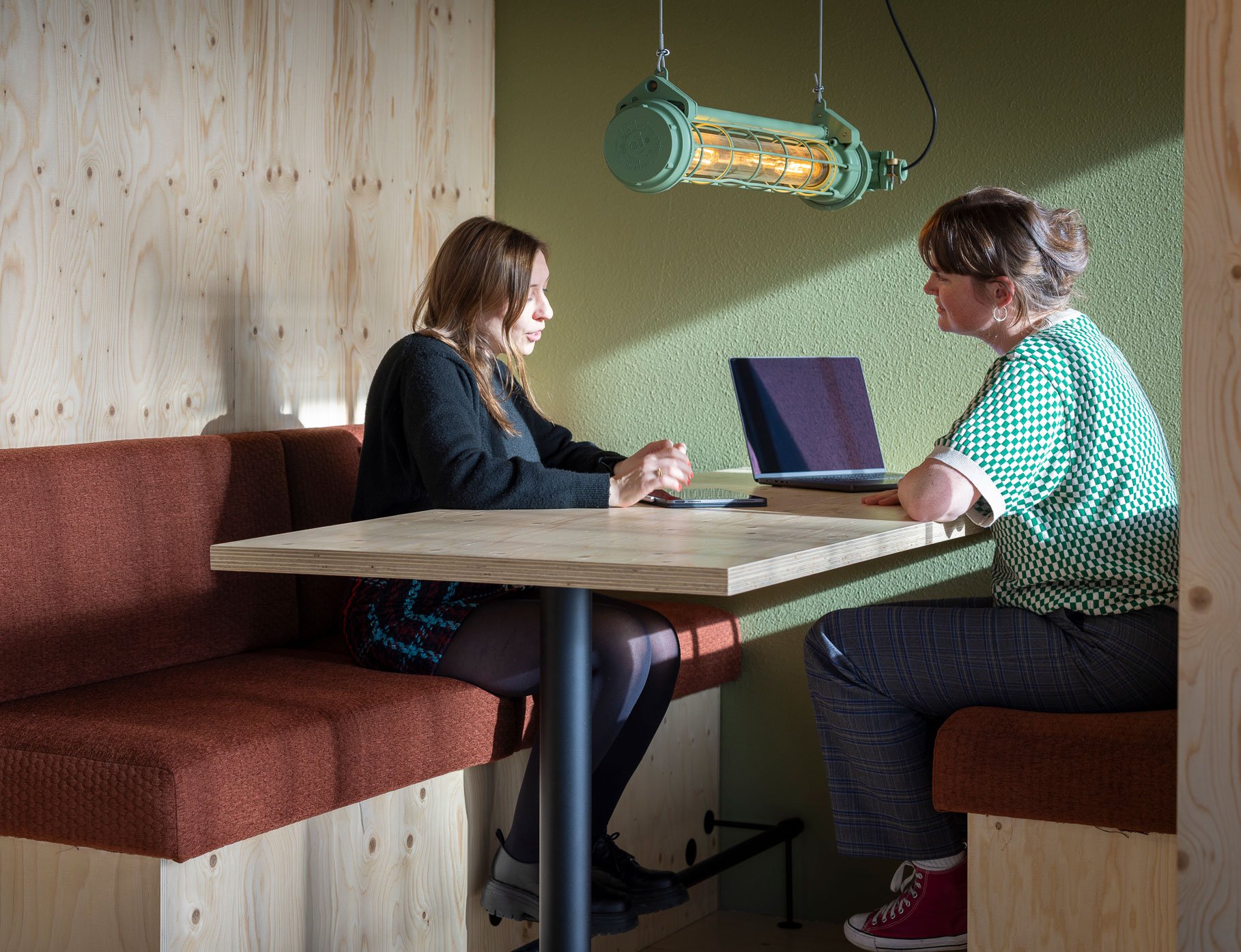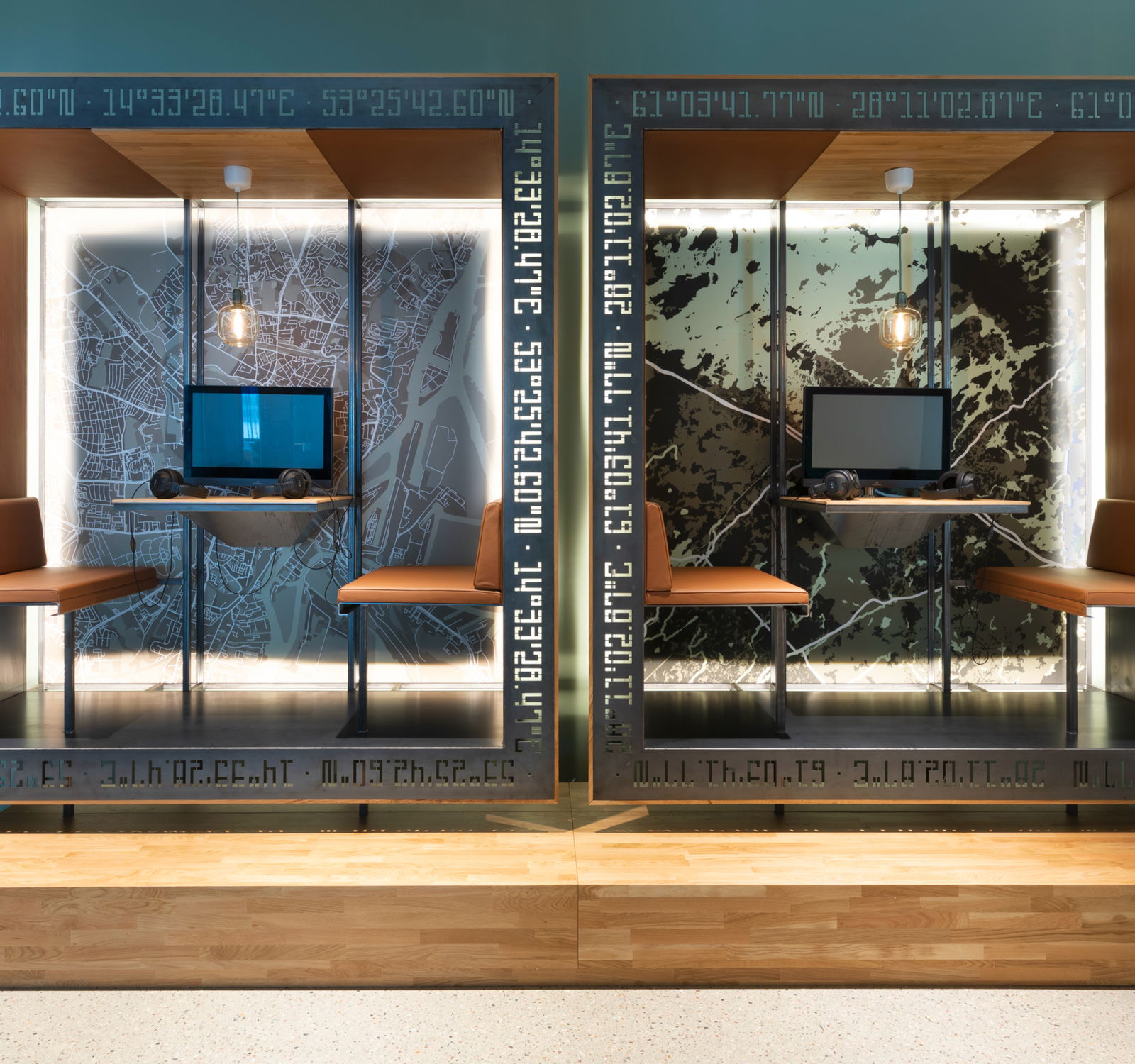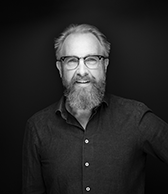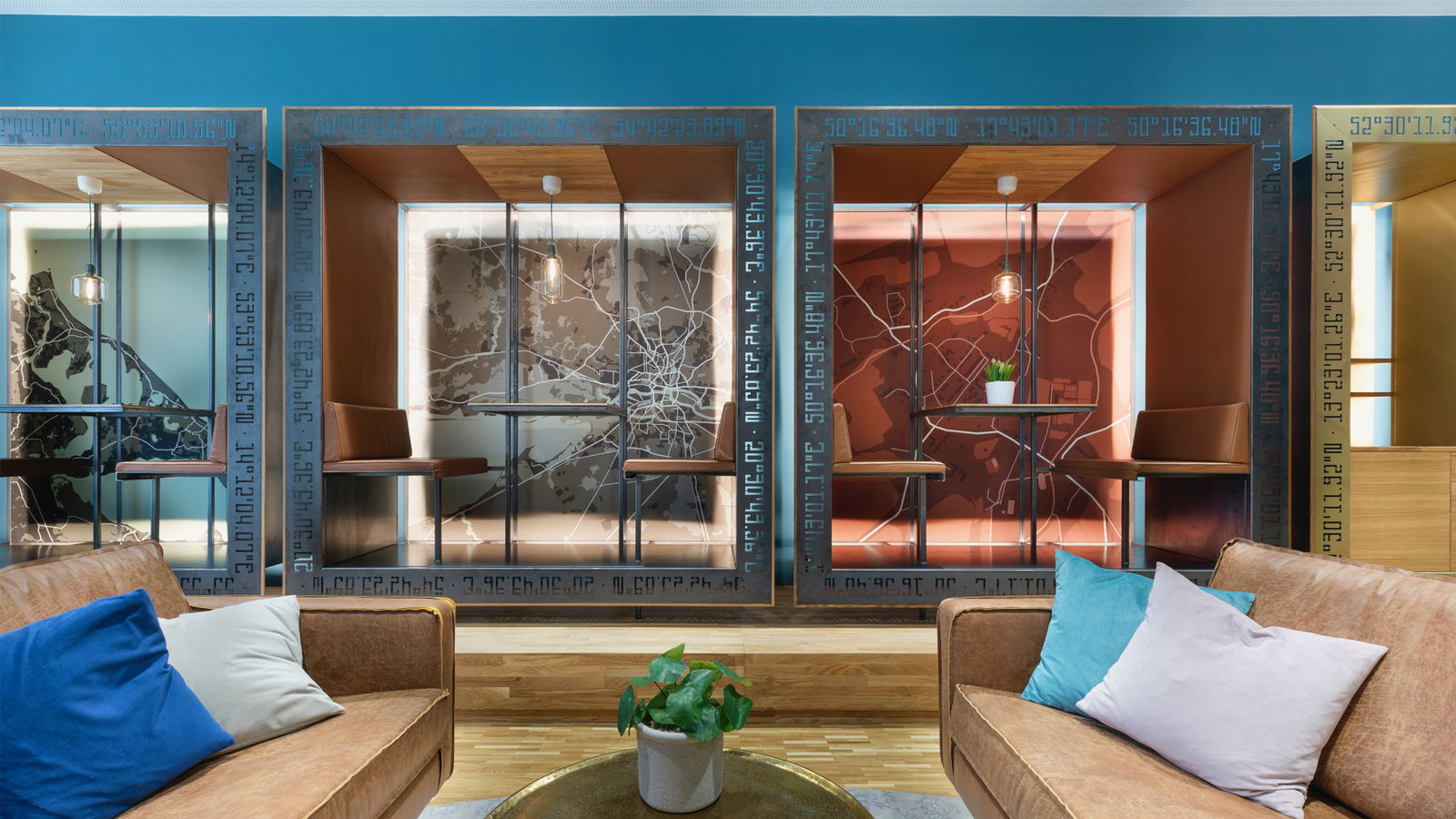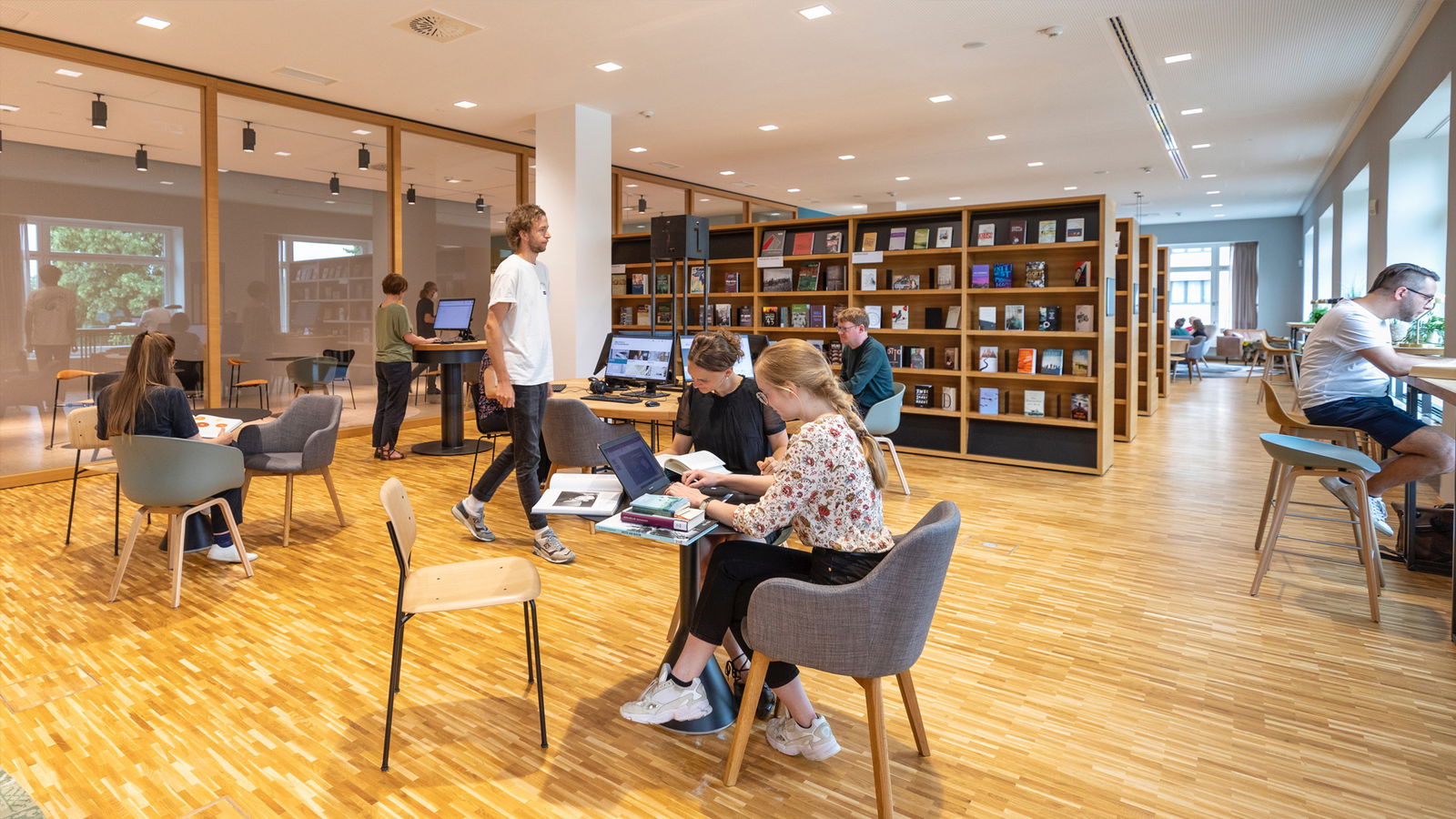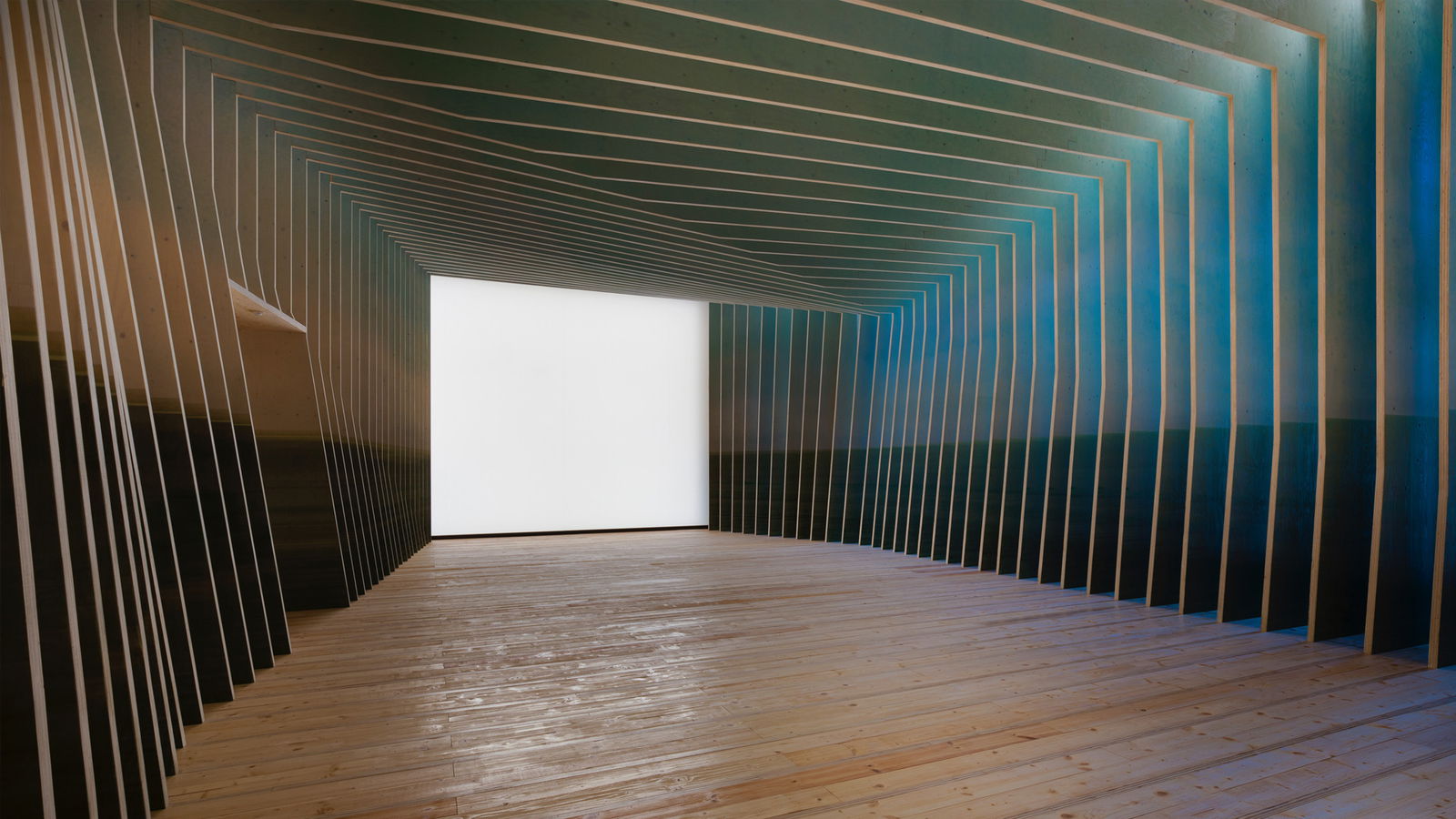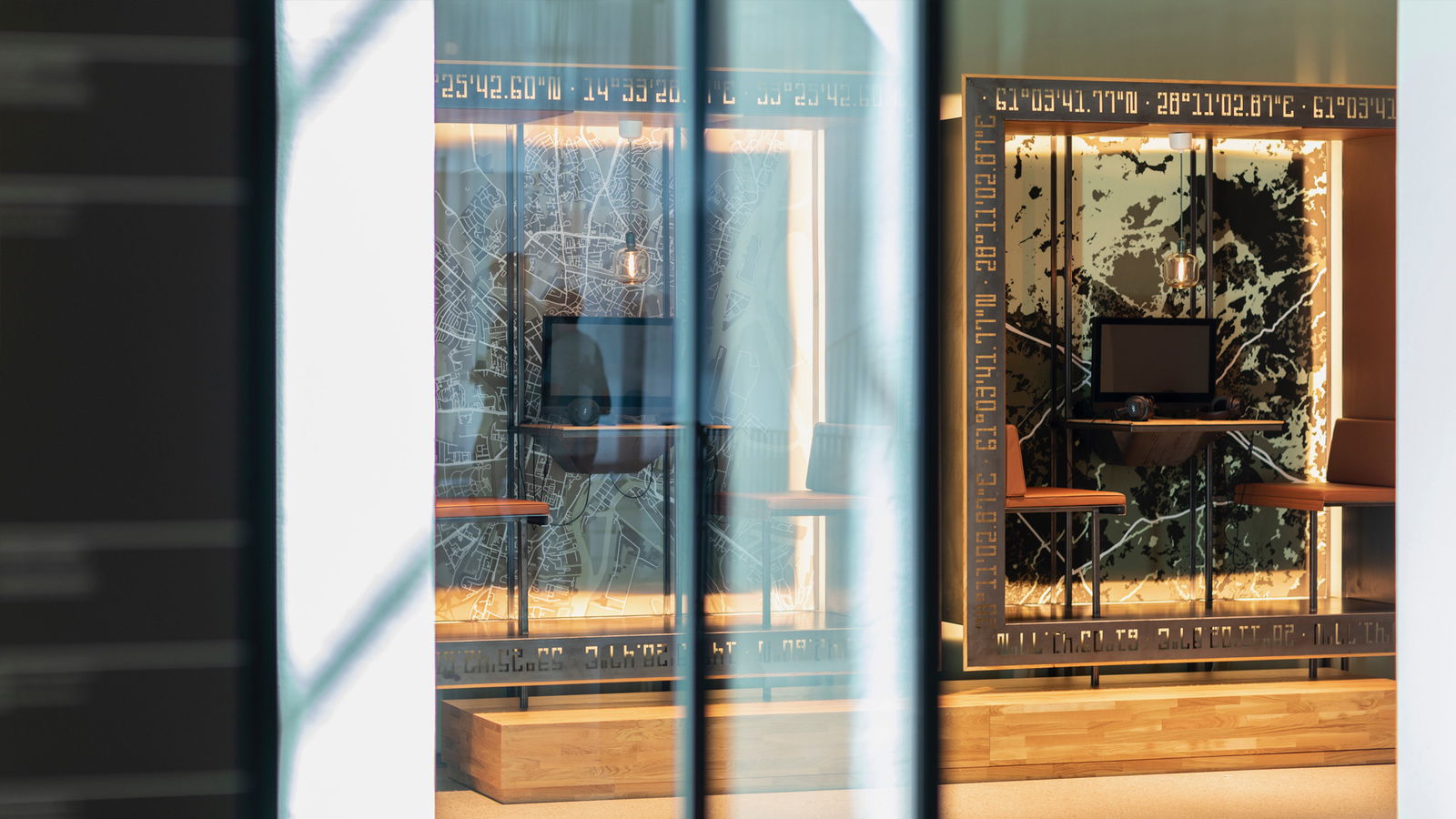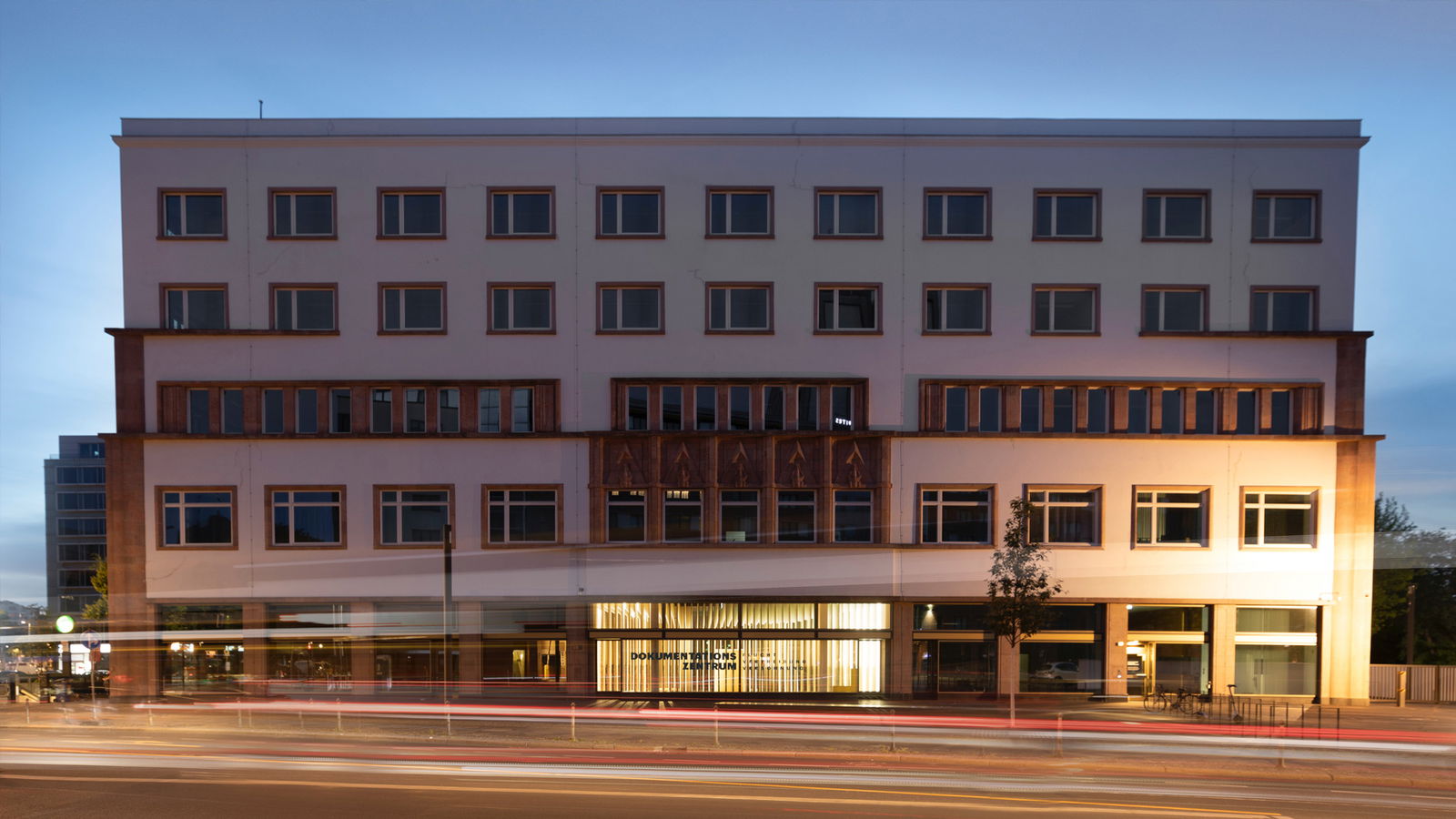Reflection needs no rush
The establishment of the Documentation Centre for Displacement, Expulsion, Reconciliation (German: Dokumentationszentrum Flucht, Vertreibung, Versöhnung) in 2021 was meant not only to provide space for remembrance and commemoration of the past but also to stimulate discourse about current events. The foundation was looking for solution to build up this new knowledge location as an inviting, open place for a wide variety of target groups. The committed team behind the foundation places great value on reflection. After touring the exhibitions to browse through books and personal reports, visitors should have the opportunity for a moment of pause in the library.
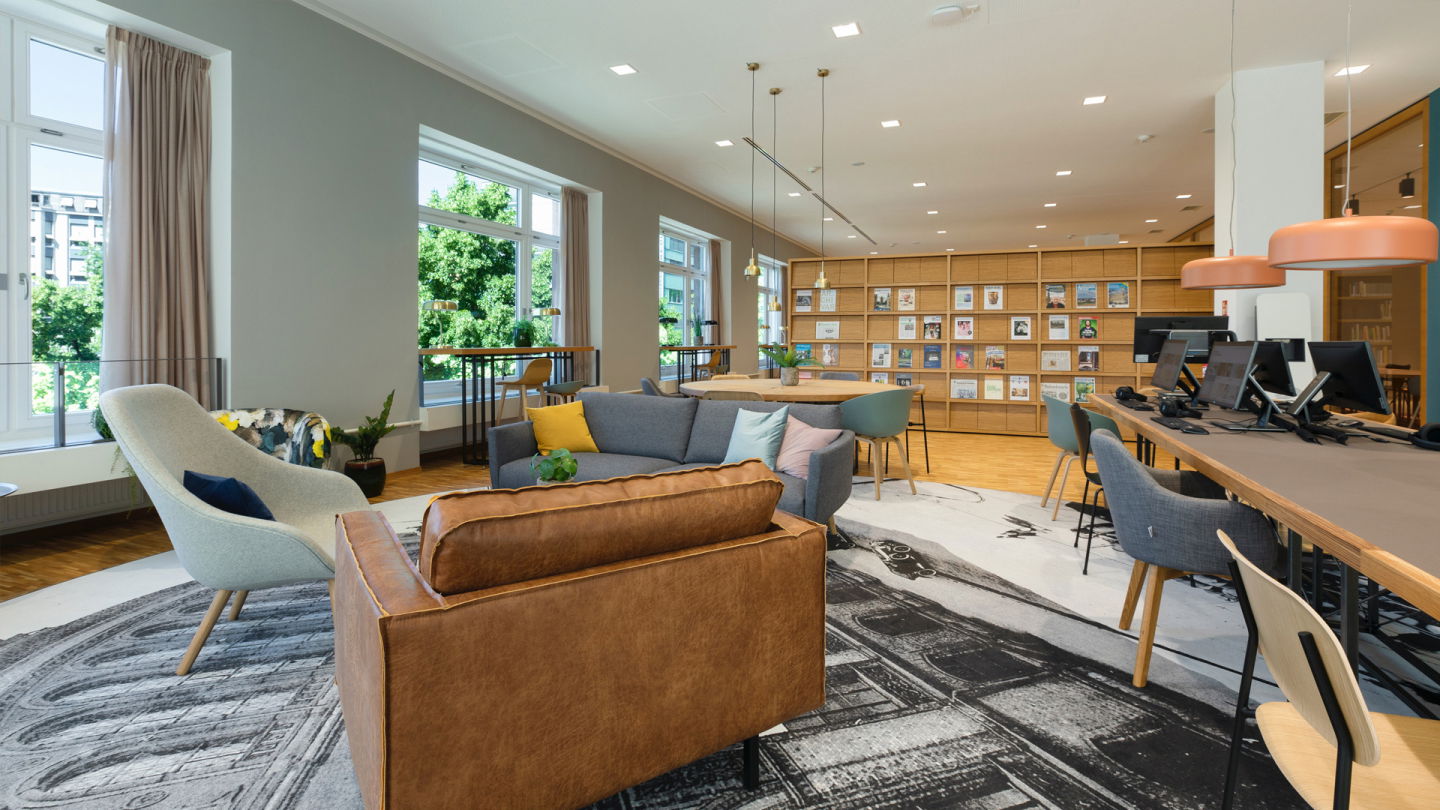
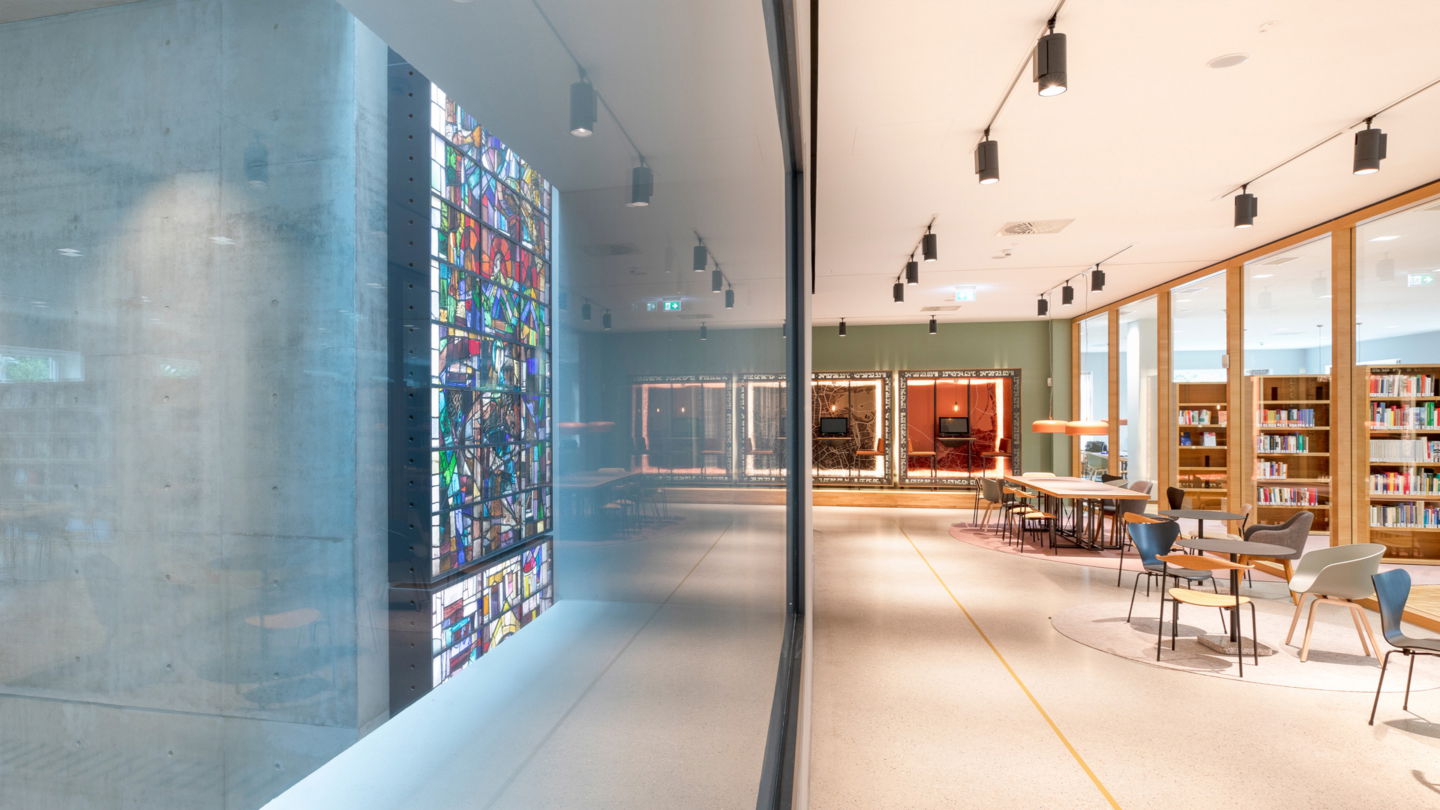
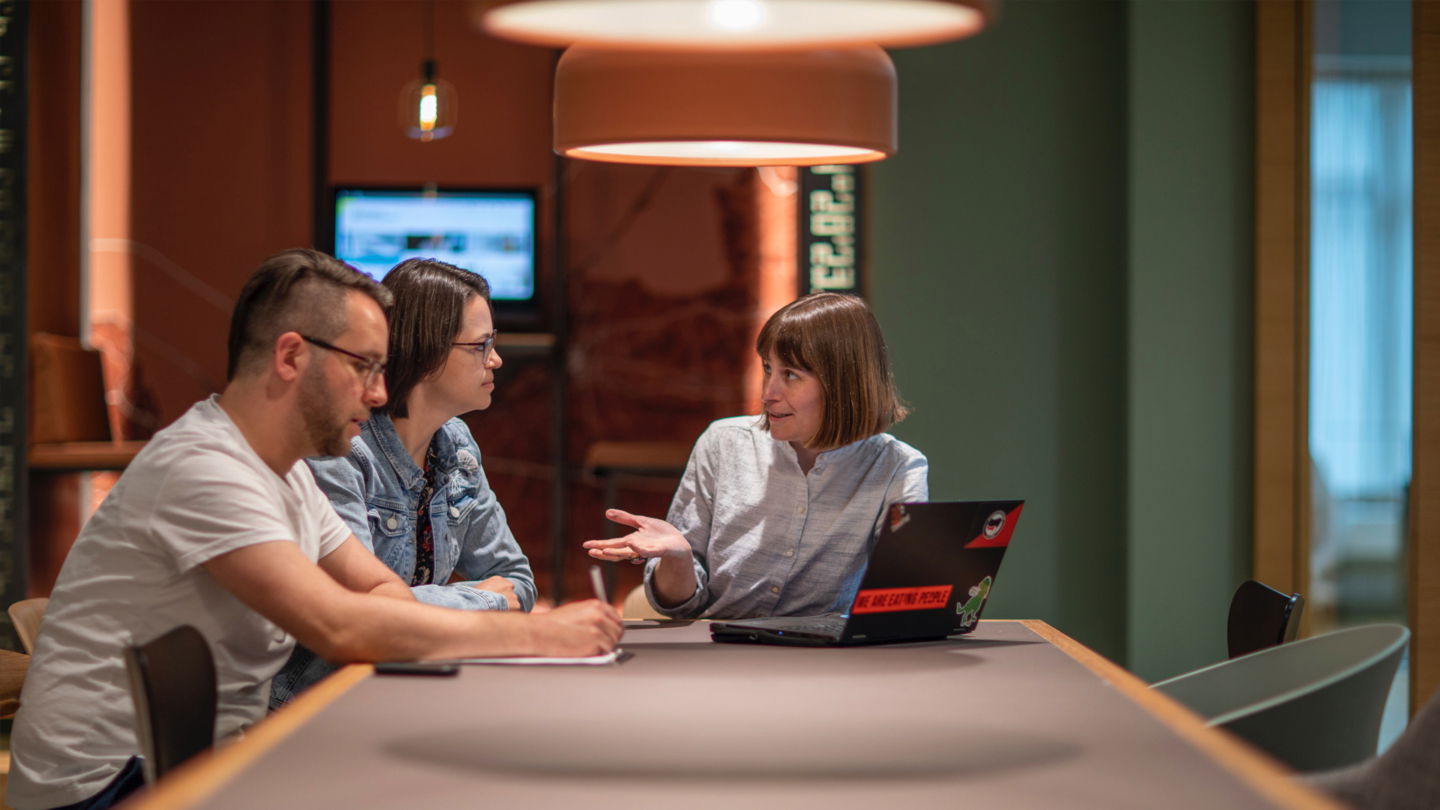
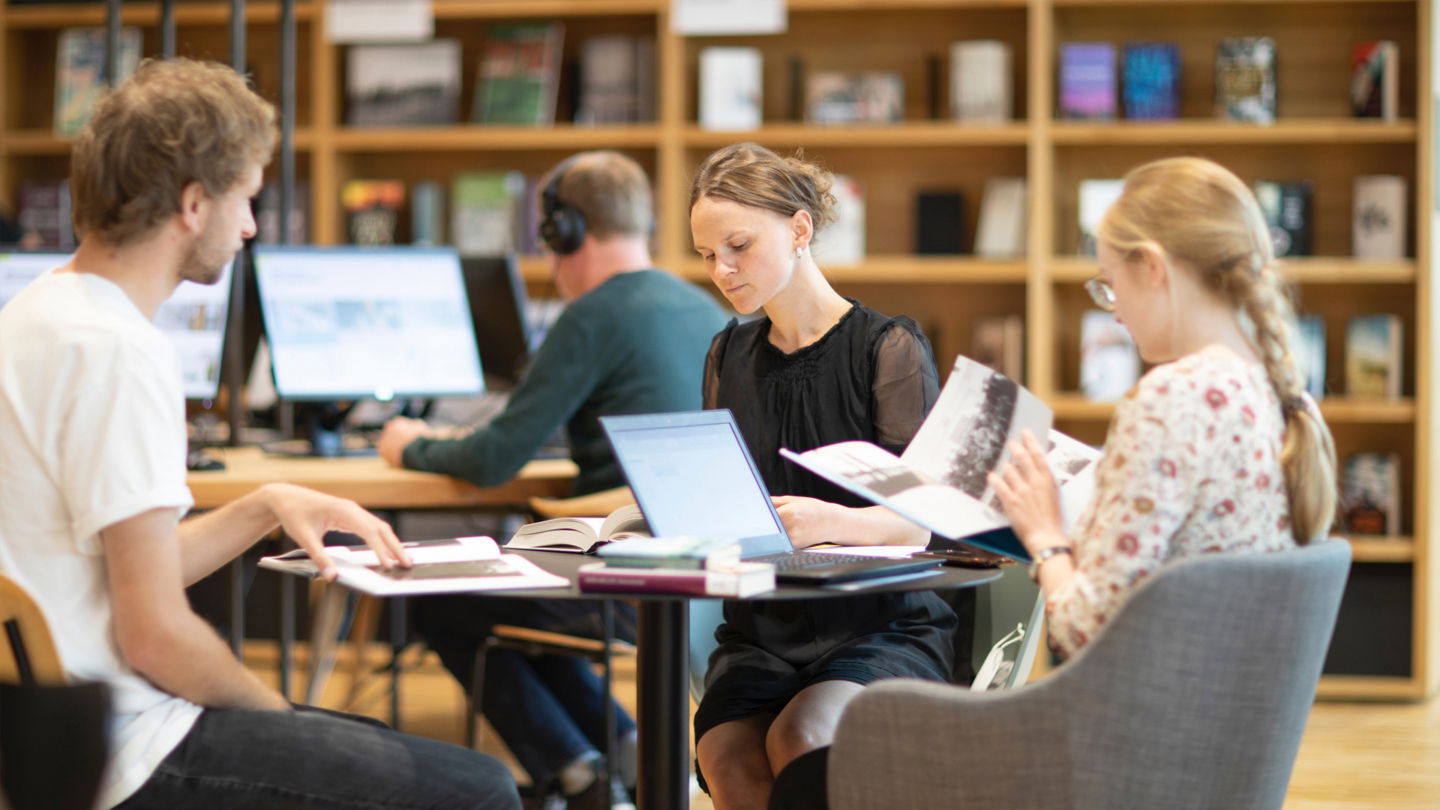
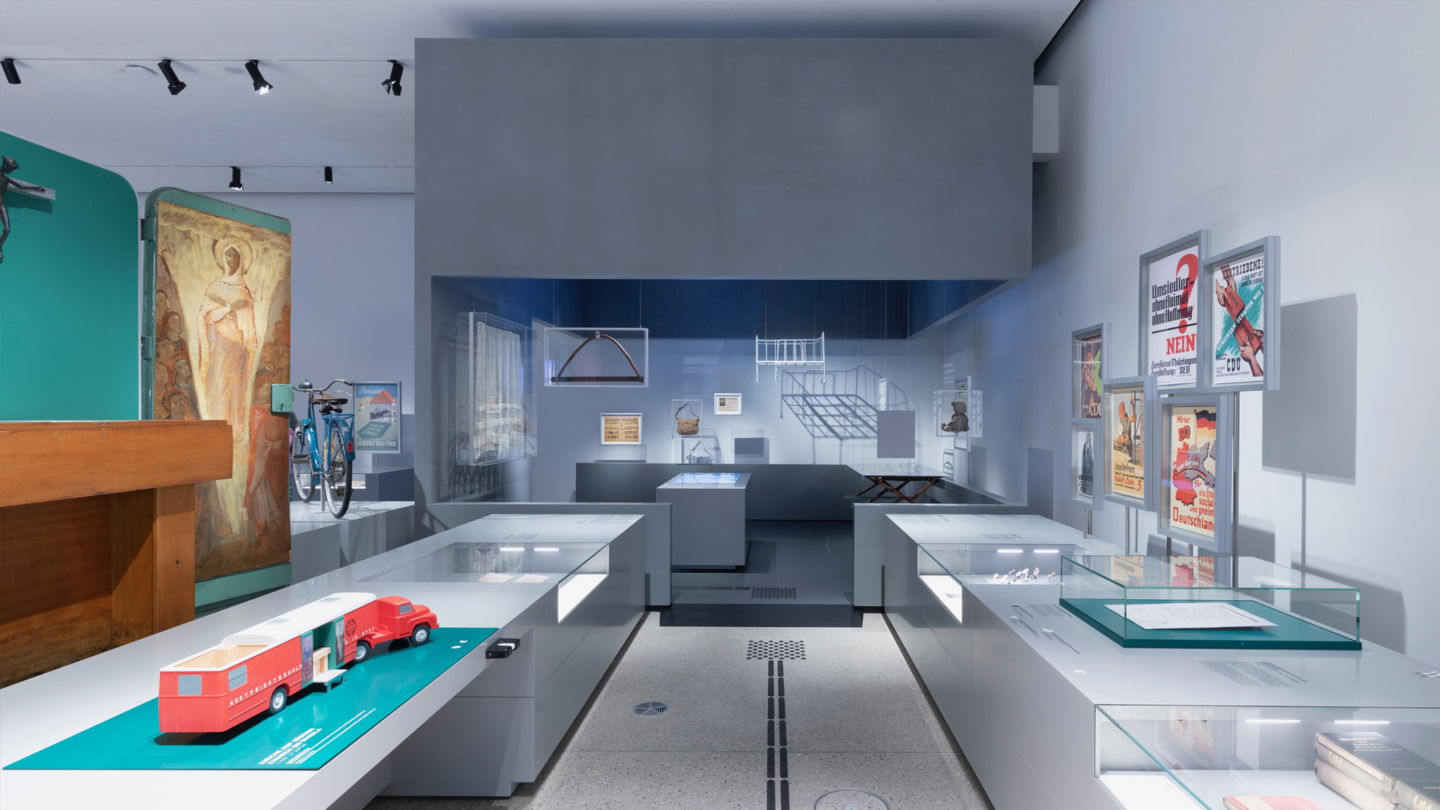
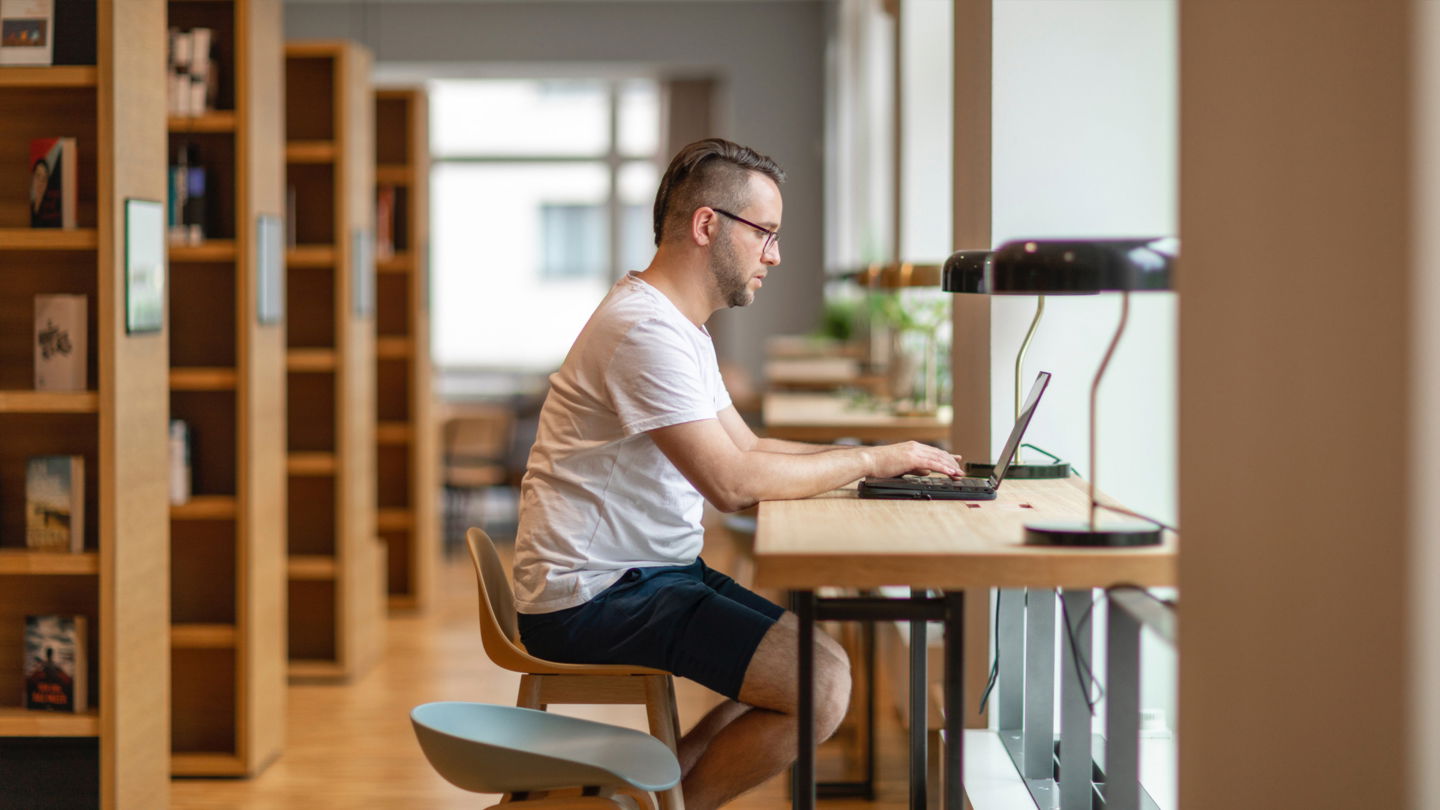
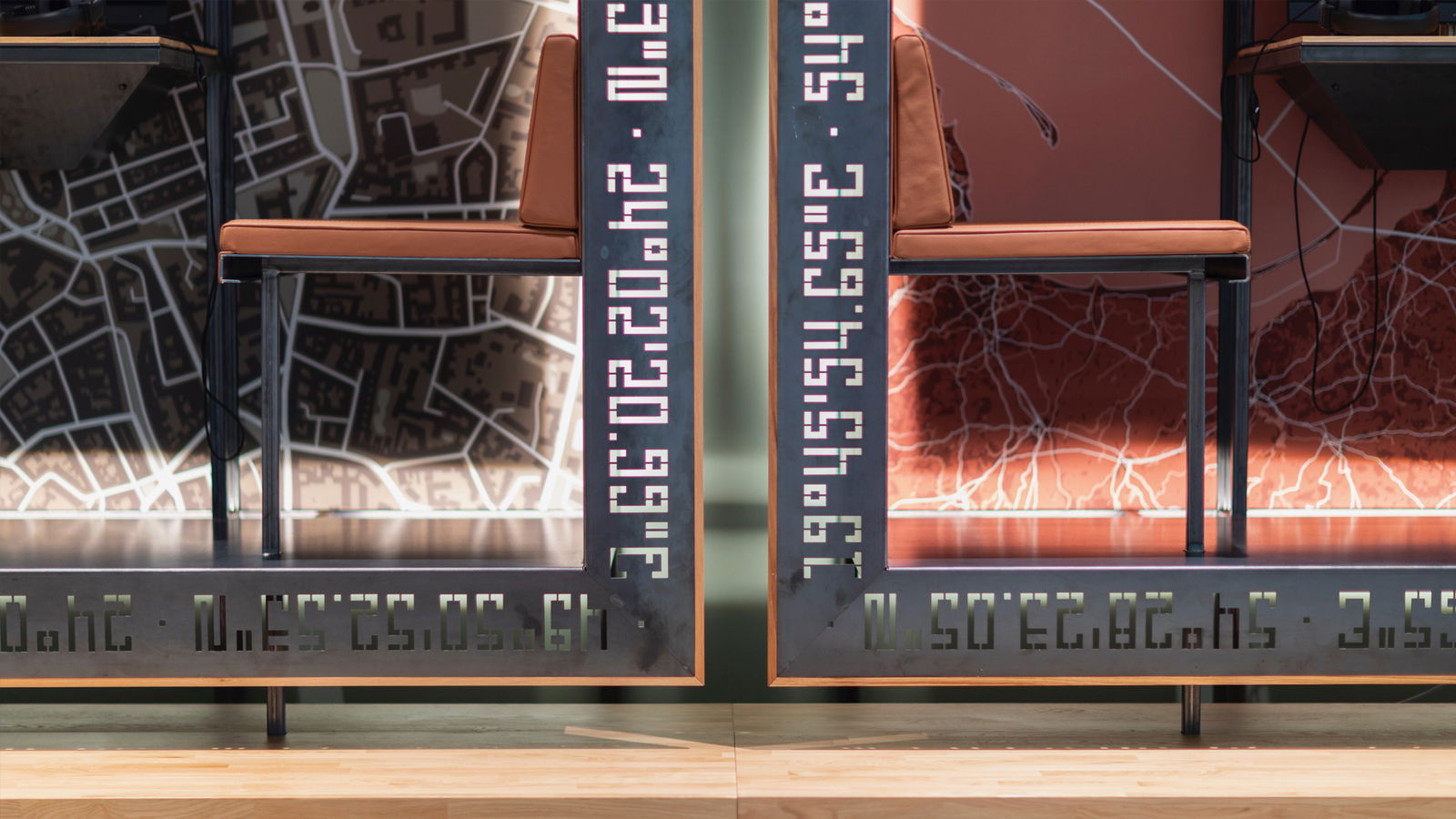
Laser-cut steel
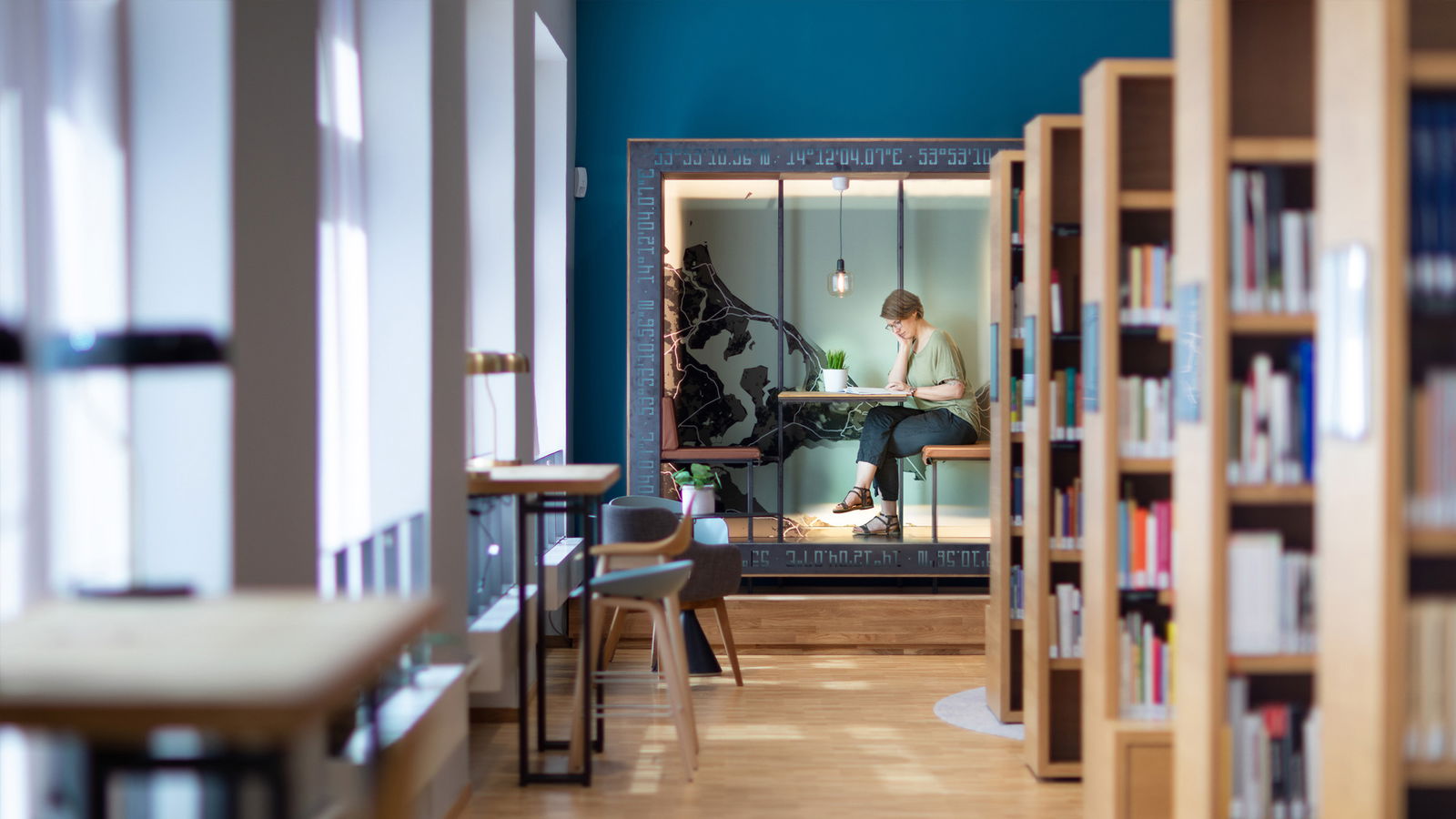
Workplaces
Invitation to the conversation
With this goal in mind, we guided the foundation’s team through a multi-day workshop. Central to this was the visitors’ experience, the joint processing of history and respect for perspectives of others. This had to be reflected in the design of the place. An important result of the workshop was the core promise of the library and testimony archive: As a central and inclusive third place, it will contextualize knowledge and invite you to engage in a conversation about it.
Leaving a mark
Before entering the reading room, visitors pass through a hallway. This area is visible from the main exhibition space. It contains intimate seating cocoons, inviting visitors further into the library – manifesting the concept of a third place already from afar. In addition to comfortable seating, each cocoon has a media station. Here visitors can access auditory and visual impressions, along with a map at eye level. Distinctive design detail: The steel frames of the cocoons show the geographical coordinates of places that were the scene of forced migration at different times, cut into the steel with a laser. This explicit, yet low-threshold combination brings visitors closer to the life stories shaped by displacement and expulsion.
The library offers various opportunities to sit down, relax and reflect on the meaning of memories. A meeting and information point with a large communal table are found in the center of the library. This central area is flanked by individual and group workstations with a small coffee bar. Attractive workplaces are set up along the window facade. Here every visitor can find a place to peruse and ponder. Leather was incorporated into the design of the cocoons and much of the seating furniture, as the natural material reminds us that there are moments in history that leave visible traces.
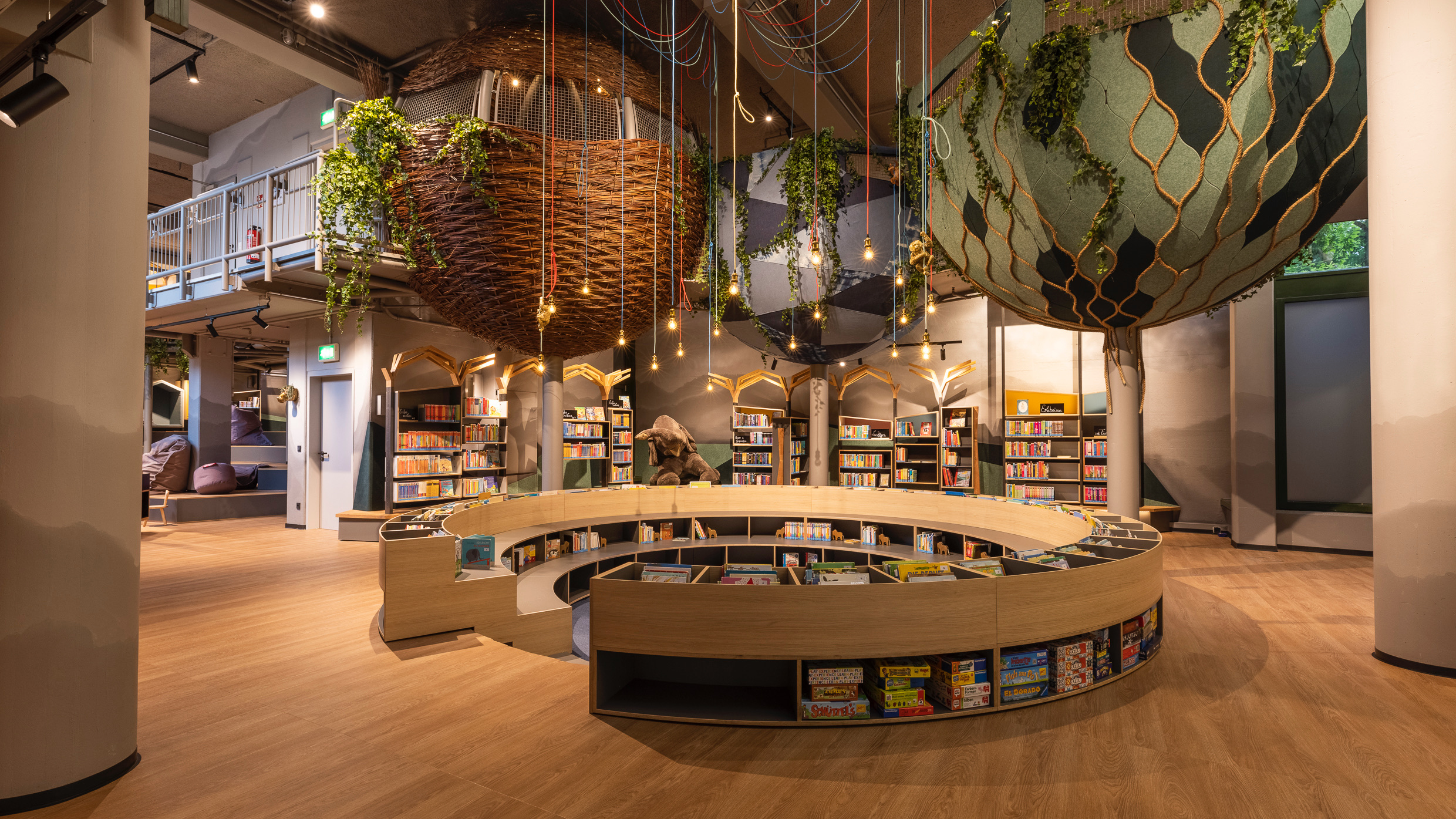
Discover our inclusive places
